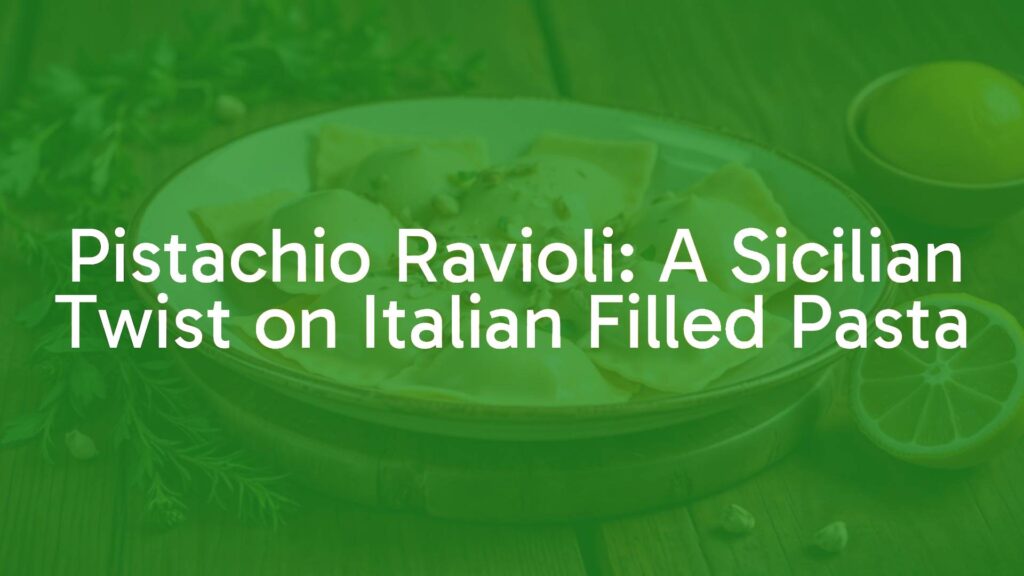Pistachio Ravioli: Celebrating Sicilian Flavors in Italian Pasta
Distinctive Qualities and Appeal
Pistachio ravioli stands out among Italian filled pastas thanks to its luxurious, nutty filling and a unique blend of flavors that evoke the essence of Sicily. Whether served as a savory first course or ingeniously adapted into a dessert, pistachio ravioli offers diners a taste of the Mediterranean, balancing sweet, floral, and savory notes within delicate pasta envelopes.
Historical Origins and Regional Significance
Originating from Sicily, a region renowned for its high-quality pistachios—particularly those from Bronte—this ravioli celebrates the island’s agricultural riches and culinary heritage. While the concept of filled pasta is widespread throughout Italy, the distinctive use of pistachios in ravioli filling is closely associated with Sicilian tradition. Over time, pistachio ravioli has become a symbol of contemporary creativity, fusing age-old pasta techniques with regional ingredients.
Essential Ingredients and Flavor Profile
The heart of pistachio ravioli is its filling, composed primarily of finely ground pistachios blended with ingredients such as creamy ricotta, a touch of Parmigiano Reggiano, and often a hint of lemon zest or herbs. The dough is made using classic Italian pasta principles—fresh eggs and durum wheat semolina—resulting in a supple yet toothsome texture. Depending on whether the dish is prepared as a savory main or a dessert, the filling may also include sugar or honey, and the finished ravioli might be finished with a light cream or citrus-infused sauce.
Variations and Adaptations
Sicilian cooks and innovative chefs alike have experimented with pistachio ravioli, leading to both savory and sweet interpretations. Savory versions frequently showcase ricotta, pistachios, and herbs, sometimes enriched with mascarpone or brightly flavored with lemon zest. Dessert iterations may include sweetened ricotta, candied citrus peel, and ground pistachios, drizzled with honey or dusted with powdered sugar just before serving. Ingredient substitutions, such as swapping pistachios for other nuts (like almonds) or using goat cheese instead of ricotta, are not uncommon in modern kitchens.
Serving Suggestions and Pairings
Pistachio ravioli is best served simply to let the rich, aromatic filling shine. A gently melted butter sauce with additional chopped pistachios, a splash of lemon juice, or a delicate cream sauce can beautifully complement the dish. Savory pistachio ravioli pairs well with crisp Sicilian white wines such as Grillo or a glass of sparkling Prosecco. For dessert versions, a sweet Moscato d’Asti or even a shot of chilled Limoncello enhances the experience. Complementary side dishes include lightly dressed arugula salads or roasted vegetables with a touch of citrus.
Conclusion
Pistachio ravioli embodies the inventive spirit of Italian cuisine, melding beloved pasta traditions with the vibrant flavors of Sicily’s prized pistachios. Its adaptability—seamlessly shifting from appetizer to dessert—makes it a compelling addition to any Italian-inspired menu, sure to delight both connoisseurs and curious newcomers alike.

